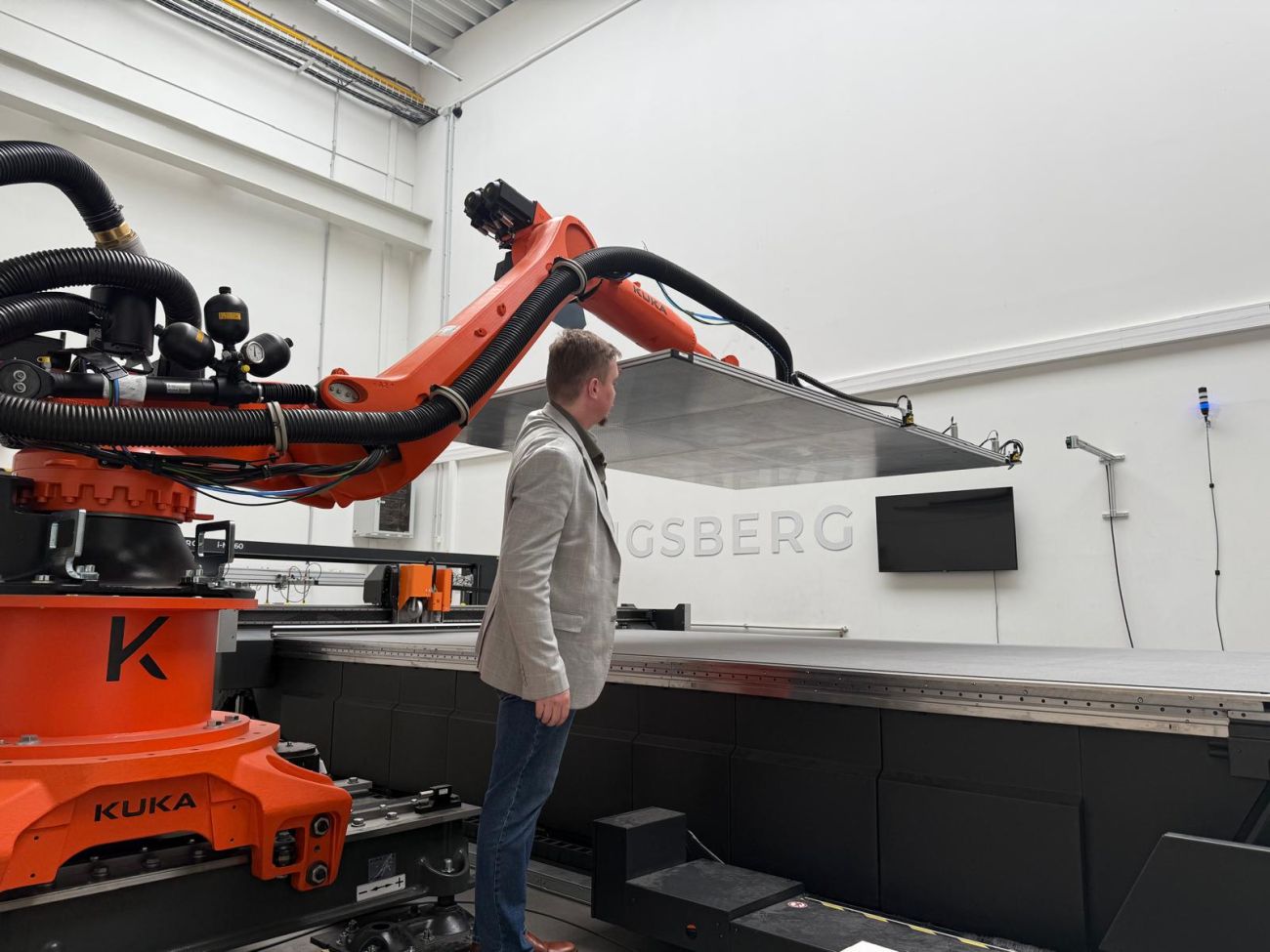
First of all, I would like to say a big thank you to Judd Pering, Florian Frodl, and Nimil David and his team of engineers for organizing this event.
To be honest, before my visit, I was a bit hesitant about recommending this solution to our clients, but now I have no doubt that in some cases, it's the best possible solution, especially when combined with the new Ultimate table model.
In my opinion, the most important things from the point of view of efficiency in production are:
- We can set up a production queue consisting of several pallets, the optimal number of pallets in the queue and cutting tables should be adjusted to the individual type of production for each customer.
- We tested production with 220cm-high pallets of material without any problems. Even if the material isn't perfectly arranged on the pallet, the robot will correct it and the output pallet is perfectly straight.
- This type of automation pays for itself very quickly, especially in Scandinavia, where staff costs are quite high. Some ROI models show a return on investment even in the first year, but this is a case-by-case basis.
- Pallet transport is at floor level, there's no need for a conveyor to create a pallet queue, and there's no need to lift pallets with a forklift to place them on the conveyor. A standard hand pallet jack is sufficient, significantly reducing the risk of accidents.
Even if you have the fastest production machine in the world, your return on investment may be delayed due to, for example, the additional need to manually straighten the material on the pallet or adjust the pallet height. If the material on the pallet at the output is not arranged straight, you limit your ability to use pneumatic waste strippers and therefore use more expensive manual labour in the next process.
And one more thing, of course, safety first. Many factories I know minimize the space in which forklifts can move. This way, they preventively eliminate the risk of accidents or other damage. Unfortunately, if they do occur, they have far-reaching consequences.
The short time it takes to produce a single product by machine is just the tip of the cost iceberg. Only a holistic view of the production process is the key to staying ahead of the competition.
Btw. I was also at the Kongsberg PCS R&D headquarters in Norway earlier, but everything is secret/confidential, I will tell everything in due time.